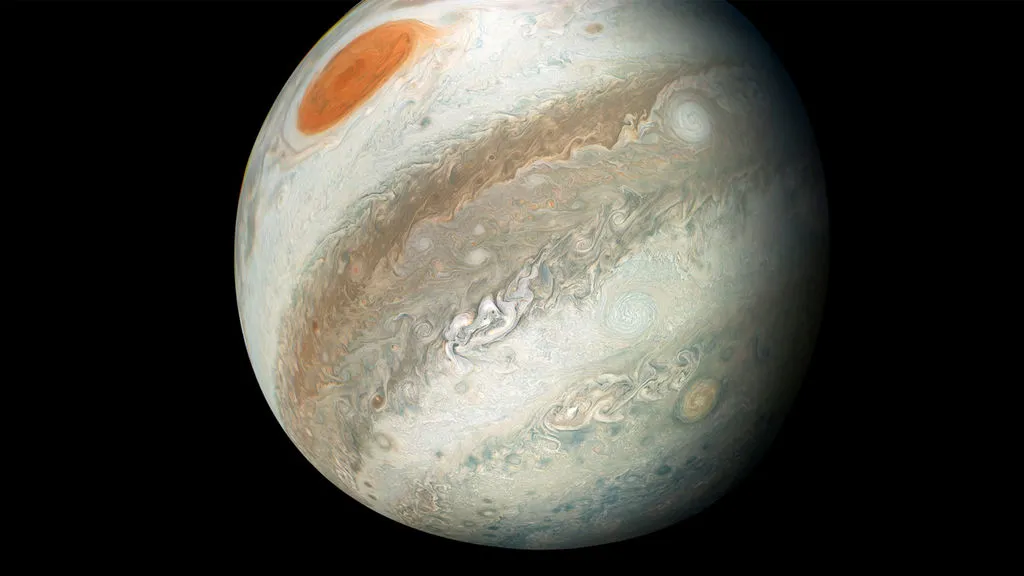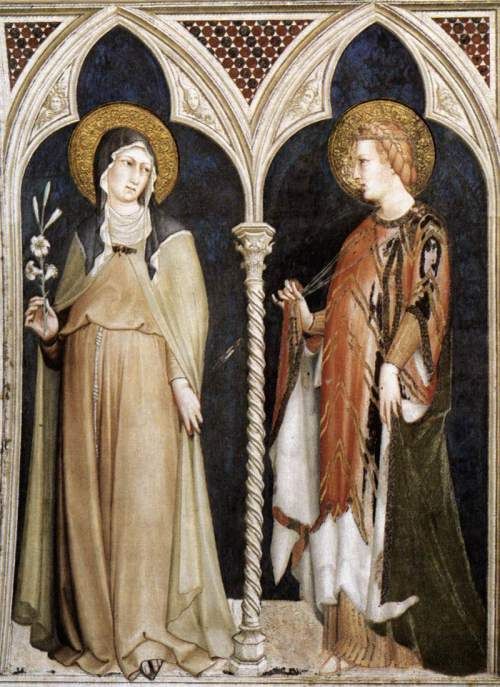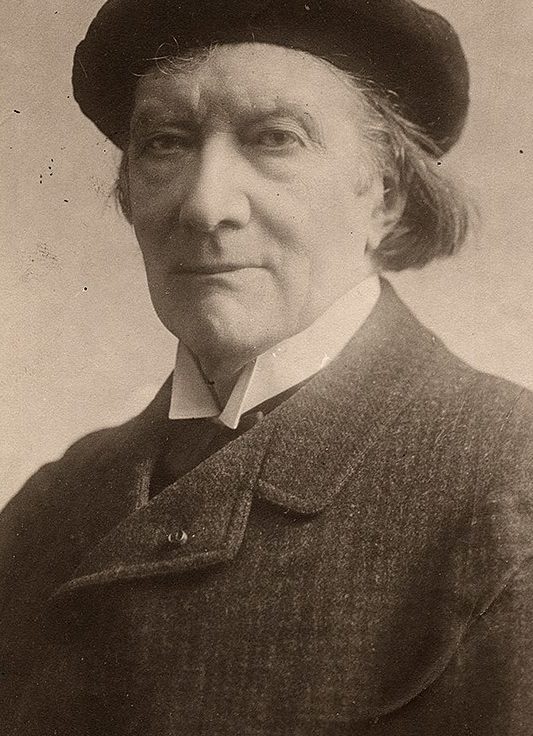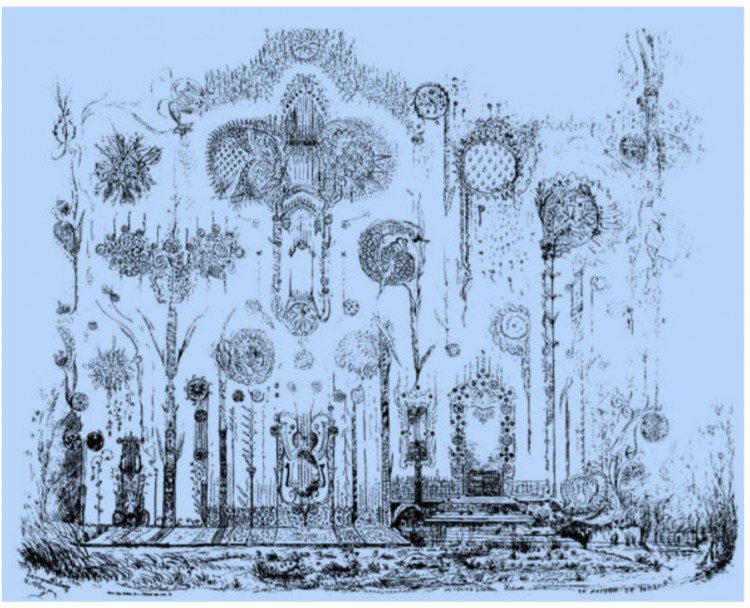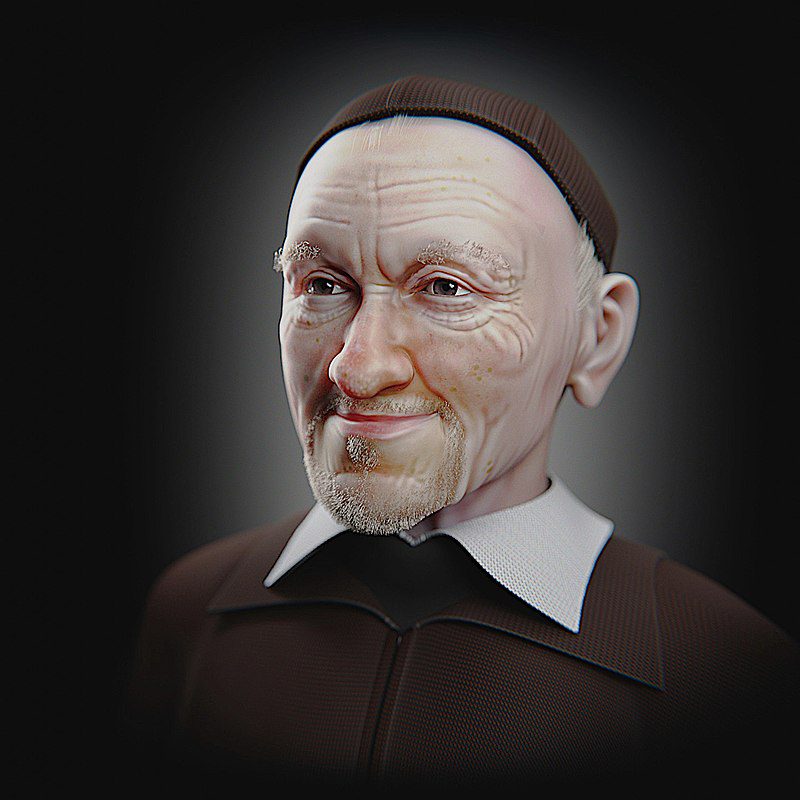What is the Spiritist Magazine and how to study it?
At the time of writing this article, we are entering the study of the 10th edition of Revista Espírita — October 1858. We started this weekly study (Click here to get to know it), broadcasting it live, knowing, by an intuition, that it would be very important and useful, but, in fact, we didn't know what to expect from this study. The truth is that, if not for reading some quotes from excerpts from this work, we didn't even know what the Spiritist Magazine was about.
Listen to the podcast:
Today, then, after nine editions of this publication, among the 136 of which Kardec himself was at the forefront, from January 1858 to April 1869 (he died in March, but he had already finished this last and important edition, which we will talk about later) — and we keep asking ourselves where he found the time and disposition for this, something worthy of a missionary — we have already managed to glimpse a little of Rivail's brilliance in the logical sequence of the development of the themes that, now we understand a little, give basis and towards the growth and strengthening of the Spiritist Doctrine — let us remember that the next works were produced, in large part, precisely from many of the themes and studies developed in the Spiritist Magazine.
It is important to say, first of all, that the Revista Espírita, as the name demonstrates, was a monthly periodical, where Allan Kardec presented several themes, some of them totally doctrinaire, others related to social, historical and scientific issues and others in which we realized a growing and uninterrupted elaboration of researches and knowledge that were giving more and more basis to the Spiritist Doctrine.
Spiritist Magazine: Journal of Psychological Studies
Many do not know, but this is the full subtitle of this journal: study journal psychological. And this is important to be highlighted, because, by today's eyes, it doesn't seem that psychology has much to do with a spiritist journal, does it? This is where the valuable and important work of Paulo Henrique de Figueiredo comes in, one of the most prominent spiritist researchers of our time, who sought, in the past, for a forgotten knowledge, swept under the rug: in short, the one that was closed in the context of Rational Spiritualism, about which we have already spoken a little on here. It is only through the study of this forgotten knowledge that we can, we say, contextualize much of what is said in RE and, in this regard, we highlight the importance of the work Autonomy: the untold story of Spiritism, by the same author.

In Kardec's context, Psychology did not have the materialistic therapeutic characteristic of today: it was a moral science, spiritualist, inserted in the context of Rational Spiritualism, and its main objective was to investigate and analyze the natural laws that govern human nature, including experimentally.
In this context, Psychology understood the human being as a being constituted of body and soul. The soul, which would survive the body, was the primary cause of the psyche, which was not just a material effect of chemistry and stimuli. We deal with this a little in the studies based on the article “The Psychological Period”, which you can read on here.
The birth of the Journal and its purpose
Kardec created the Spiritist Magazine based, in part, on the suggestions of a Spirit who communicated through Ms. Hermance Dufaux (it's with H, really) who, according to Canuto de Abreu, cooperated in transmitting valuable guidelines for this journal:
At the end of 1857, Kardec had the idea of publishing a spiritist journal and wanted to hear the opinion of the spiritual guides. Hermance was the chosen medium and, through her, a Spirit gave the Master of Lion many excellent directions. The organ was named “Revista Espírita” and was launched in January of the following year.
One of Kardec's greatest interests was to correspond, in an easy way, with the followers of Spiritism spread across Europe. Through the Magazine, a publication of easy circulation and of general interest — Kardec, in it, even addressed everyday facts and of great interest, involving the Spirits — the Doctrine quickly permeated the masses, who eagerly read its pages. There was no shortage of letters subscribers, thousands of them, many of which Kardec didn't even find time to answer.
We emphasize the word “subscribers” on purpose: Kardec, or rather the Parisian Society of Spiritist Studies, charged for a subscription to this journal, but never for self-enrichment, but with the aim of obtaining resources to reduce the costs of the works, provide social support, etc. We quote about this in the article Propagation of Spiritism.
We were talking about the purposes of the Magazine. We know very well that Kardec identified, right from the start, with his perspicacity as a researcher trained, since childhood, by the investigative method of Nature, by Pestalozzi, that…
… The isolated opinion of a spirit is just that — an opinion — therefore, it cannot be taken, in isolation, as if it were an unquestionable source of truth, since spirits of all types can communicate, and deceiving spirits take the names even of the saints and of Jesus, without shame, especially when they realize that they are not questioned.
Therefore, Kardec sought a way to strengthen the basic and inexorable principle of the Doctrine, which is that of universal agreement of the teaching of the Spirits, which must, in addition, comply with logic, reason, common sense and already formed science, both on the part of men and on the part of Spirits, by the same method. Now, as we can already see, through the Spiritist Magazine, where he received the various reports from various parts of the world, through his correspondents, the Lyonnais master obtained just that, in large part! We see an example of this in letter from Mr. Jobard, in July 1858, and in the observations of a correspondent in September 1858.
Kardec's Evocations
There is also an even more important aspect presented in the Magazine, which clearly demonstrates a very little known face of Spiritism in the current spiritist movement: that of the nature and usefulness of evocations of Spirits. Now, at a time when the famous phrase of dear Chico Xavier became law — “the telephone only rings from there to here” — about which we have already analyzed in the article “Spiritism without the Spirits” — which was our surprise (at least for those who did not know this reality) when we found that Kardec used evocations as naturally — but with the necessary seriousness — as the one we use to talk to people around us.
In practically all editions, Kardec presents evocations of Spirits, which he carried out in order to obtain better understandings about the morality understood in certain events, as well as to try to probe some scientific facts involving Spiritist phenomena, as happened in "A new photographic discovery", of July 1858.
This is how, number after number, Kardec presented the most diverse evocations, some made by himself and others made by his correspondents. Spirits of suicides, madmen, murderers, kings, commoners, people of great morals and benevolence and inferior spirits were evoked. Many of these, by the way, were very few days after their death, which contradicts what a large part of the current spiritist movement has said.
It is important to point out, of course, that the evocations were not intended to serve anyone's empty and inferior curiosity or fun: in addition to the teachings that could be gathered from all of them, for the superior spirits it was always a happiness to help us and, for the lower ones often provided precious moments of reflection and rebalancing.
Strengthening of the Doctrine and deconstruction of false or incomplete concepts
The form to the Spirit
To give a practical example, in these deconstructions of ideas that are widely rooted today, we have, even if in the beginning, one of them that began to draw our attention: the question of form for the wandering Spirit (between incarnations). It is customary, nowadays, the conception of a whole fantastic world and full even of automobiles in the spiritual plane… However, Kardec, from a certain edition, starts to probe what is form for spirits, through questions such as “how would we see him if we could see him with our eyes?” or “do you see other spirits? In what way?".
This is how, in July 1858, in the article “Berezina's Drum“, Kardec asks the following questions, after carrying out a series of inquiries trying to understand the moral and rational state of that Spirit, who was a soldier in his last incarnation:
28. ─ Do you see other spirits around you? ─ Yes, many.
29. ─ How do you know they are spirits? ─ Among us, we see ourselves as we are.
30. ─ How do you see them? ─ As spirits can be seen, but not through the eyes.
31. ─ And you, in what form are you here? ─ Under what I had when I was alive, that is, as a drum.
32. ─ And do you see the other spirits with the forms they had in life? ─ No. We don't take on an appearance until we are evoked. Other than that, we are formless.
The last answer was quite interesting, but so far it was just the opinion of a Spirit. Worthy of note is Kardec's methodology, probing matters of interest, instead of asking direct questions that could be answered in a biased way. Then, in September of the same year, in the article “Lectures from beyond the grave — Mrs. Schwabenhaus. Ecstatic Lethargy“, Kardec asks the following questions, getting the following answers. Please note:
29. ─ In what form are you among us? ─ Under my last female form.
30. ─ Do you see us as distinctly as if you were alive? ─ Yes.
31. Since you have been here with the form you had on Earth, is it through the eyes that you see us? ─ No, the Spirit has no eyes. I only find myself in my last form to satisfy the laws that govern spirits when evoked and forced to resume what you call perispirit.
Let's see, then: there are already two spirits, of different elevations, saying the same thing: for the spirit freed from matter, there is no form, like the one we understand. They assume the perispirit, attending to a natural law, only when they need to act materially, when, for example, they approach us to communicate (with materially I mean: they need to assume the perispirit to be able to put themselves in communication with us, which, above all, happens through this “clothes”. It is, therefore, matter, but a very subtle matter, extracted from the universal cosmic fluid[1]).
Does this mean that Kardec's studies belie André Luiz? Well, despite the fact that Kardec's methodology is quite logical, leaving little room for error, it would perhaps be hasty to draw conclusions based only on these two Spirits — we still don't know if there are, further on, more evocations that support this thesis — but we also don't know. we are saying that Chico Xavier was wrong, since he was a tool of the Spirits, nor that André Luiz lied, but rather that he spoke according to his conceptions and understandings. Who knows, he could be talking about a situation of “incarnation” of Spirits, in a more subtle matter? Nor do we rule out the existence of true cities, formed by Spirits still very dependent on matter and form — which, in short, is not good at all, but we understand that it is a phase.
the suicide
Another topic that has been largely deconstructed from its modern conceptions is that of suicide. Today, in the spiritist milieu, there are assertions that the suicidal person is on the “threshold” or “the valley of suicides”; that he will be attached to the body, “feeling” it being gnawed by worms; that he will be years in extreme disturbance, being impossible to communicate; and, also, that the suicidal person will be born tomorrow with physical defects in order to “redeem a karmic debt” (this last passage causes an aversion even to write).
Well, so far, Kardec has already evoked two suicides: The Samaritan Suicide, in June 1858, and Suicide for Love — September 1858 — where a young man killed himself on his girlfriend's doorstep, at the height of his emotions, as she had stubbornly refused to take him back after a big argument.
The first is evoked about two months after the fateful episode: “I ask Almighty God to allow the spirit of the individual who committed suicide on April 7, 1858, in the baths of the Samaritan woman, to come and communicate with us” — note the simplicity in evocation. This Spirit denoted great moral suffering, which had been going on since before his death, which he sought out of despair in not knowing how to deal with the heartbreaks and trials of life. São Luís ends the communication saying only that suicide abruptly interrupts life, which can cause a certain momentary difficulty in letting go of the body.
The second is evoked seven or eight months after the suicide. This spirit no longer suffers so much, because it understood the lack of usefulness in what it did, and that it did it by a thoughtless act driven by unrestrained passions (emotions). In this one, there is only a “mental imprisonment” at the moment of the act, which kept repeating itself in the mind of this Spirit, since it was linked to it with repentance.
In none of them, there is no mention of what has become commonplace in the Spiritist environment, which, in fact, are half-truths: there are different possibilities, according to the mentality of each one, but the current Spiritist insists on taking the exception as a rule. .
Autonomous Morality
Paulo Henrique de Figueiredo has spoken a lot and defended the essence of Spiritism as an autonomous morality. And much has been criticized by a few who have not yet been able to see this in the Doctrine. Here, there is one more current concept deconstructed by the study of Revista Espírita. I will not delve into the matter further, as in this article I have already introduced the concept. I just want to point out that, in the Magazine itself, we see this concept very well founded, and not just by Kardec, but by the Spirits.
In the first edition of RE, in January 1858, we have the article “a conversion", which presents the following sequence of questions and answers, made to the deceased father of a boy, by that same boy, who sought to believe in Spiritism:
15. — Will we be punished or rewarded according to our actions? — If you do wrong, you will suffer.
16. — Will I be rewarded if I do good? — It will advance on its way.
17. — Am I on the right track? “Do good and you will be.
Note the moral depth of this simple dialogue. There is no punishment and reward, but only ourselves, before our own conscience, according to our choices.
Later, in October 1858, in the article “Murder of five children by another twelve-year-old—Moral problem“, Kardec asks São Luís about the possibility of that Spirit, of the murderer, returning to incarnate on Earth, and not on an even more backward planet:
11. ─ So can he find on Earth the means to atone for his fault, without being forced to return to a lower world?
─ In the eyes of God, repentance is sacred, because it is man who judges himself, which is rare on your planet.
Dear friend, do you see the beauty of the Spiritist Doctrine, truly consoling and autonomous, shown in its original face? No karma. No “action and reaction”. No “law of return”. Let's study, let's study, because the current spiritist movement, flooded with narrow concepts and contrary to the Doctrine of Spirits, is far from its original essence and reality!
How to study the Spiritist Magazine
Very well: we have already presented the inestimable importance of this periodical by Kardec; we have also presented the depth it has and the logical and rational chaining of something that forms the body of a very well established Scientific Doctrine, which is Spiritism. It remains to be seen: how to study these 136 numbers of this publication?
We believe there are two main ways, on which, by the way, we are discussing and adapting, at the moment, in order to arrive at the best method. The first of them is the one that respects the chronological form, edition by edition; the second is the one that “crosses the line”, in a good way, in Kardec, and advances by subjects, in a more or less chronological way. I explain:
In the first modality, which is what we have done so far, we take the Revisa, edition by edition, and dedicate ourselves to studying it individually, in the first place, in order to extract the best understanding of each issue and subject, enriching the study. This is because there are, in it, accessory subjects, which do not present great gain in bringing to group study, as is the case of the phenomena presented by Kardec, in what we would call today “spiritist stories”. Not that they are not useful articles, as they greatly reinforce the understanding of the fact of spiritist phenomena, especially for those who still have doubts about them.
On the other hand, other subjects are so important and profound that they deserve special attention, sometimes seeking complements not only in Kardec, but also in complementary works by other researchers, contemporaneous or not with Kardec. Several times we have found it very useful to approach not only other works by Kardec that, if we were to base ourselves on the correct chronology, had not even been published, but also works such as those by Ernesto Bozzano and recent ones by Paulo Henrique.
Another way to carry out this study is, as we said, "outrun" Kardec and advance on the subjects in all the years of the Journal and the Professor's complete work. But this in a good way: Kardec, chronologically, which is obvious, is maturing his own understanding of the Doctrine of Spirits, through incessant research. Thus, we can see, for example, Kardec talking about vital fluid, in 1858, but, in A Genesis, discarding fluids and staying with Mesmer's thesis, Animal Magnetism and the vital principle. Therefore, one can disregard the chronological order in order to study the subjects covered in the Journal, complementing and remembering them as one advances through the numbers, in order.
At the moment, we are opting for a middle ground: we discard the deepening in the accessory subjects, focusing on the main subjects and, from them, doing the due deepening, as we see the need. Perhaps we will approach more than one edition in the same study, when we see that the subjects of more than one of them are built and complemented sequentially. We just don't think it's useful to go too far, because understanding the construction of Kardec's thought, his method, the teachings of the Spirits between the lines, is something that we consider very useful and important.
The end of the Spiritist Magazine under Kardec's tutelage
Finally, we come to the end of the article, citing the end of the Spiritist Magazine with the death of Allan Kardec. “But, Paulo, Revista Espírita continued to be published for many years after his death”. Yes, it continued… But, unfortunately, it was subverted by the petty interests of money and vanity. While it was under Kardec, it was a methodical, well-formulated publication and, above all, impersonal, focused on the interests of Spiritism, that is, of the Doctrine of Spirits, which does not belong to any incarnate and does not come out of the ideas of any of them, in isolation.
After Kardec's death, those who took over and subverted the Society (for more details read Allan Kardec's Legacy, by Simoni Privato) began to use this periodical to publish the most complete absurdities, among them, under the direction of Pierre Leymarie, articles promoting a false medium, who claimed to obtain photographs of the Spirits. The promotion was literal, because, in the Revista Espírita, it was even given the indication and the amounts charged to obtain a supposed photograph of a dead relative. The case resulted in a major lawsuit against Leymarie and her associates, in what became known as The Spiritist Process and which absurdly tarnished the Doctrine's reputation in society.
But it did not stop there. The Spiritist Magazine, after 1869, became a constant place for publishing absurd articles, many contrary to the Doctrine until then formed by the indispensable methodology applied by Kardec. That is why, together with the other damages caused to the Doctrine, that, today, we are with the Journal only for the time it was under the conscientious hands of Allan Kardec, and it is for all the above, so far, that…
… We invite everyone to set up study groups on this publication, adding to it the most current research, so that the learning of Spiritism, as a Scientific Doctrine that it is, can, every day, leave the circles of Spiritist scholars and spread its influences on society, which is desperate for answers once again.
For this, we recommend observing the recommended works for study, as well as accompanying the studies of the group Spiritism for All, in the YouTube.
1. Says Paulo Henrique de Figueiredo, in Genesis (FEAL, 2018):
“There was the theory of the universal cosmic fluid, initially adopted by Franz Anton Mesmer (in the Science of Animal Magnetism), according to which the Universe would be composed of a single generating element, fully occupying space, divided into innumerable phases of density, progressively, from tangible, liquid, gaseous matter, the ether and other even more subtle conditions, imperceptible to the senses. In this other theory, the forces would not be substances, but states of vibration at various subtle levels of the universal fluid. For example, light would be a state of ether vibration. By analogy, considering the adoption in this work of the theory of the single generative element as a universal explanation of physical phenomena, spiritual fluids would be among the most subtle states of the universal cosmic fluid”. We recommend the work Mesmer: the denied science of animal magnetism, by the same author.

